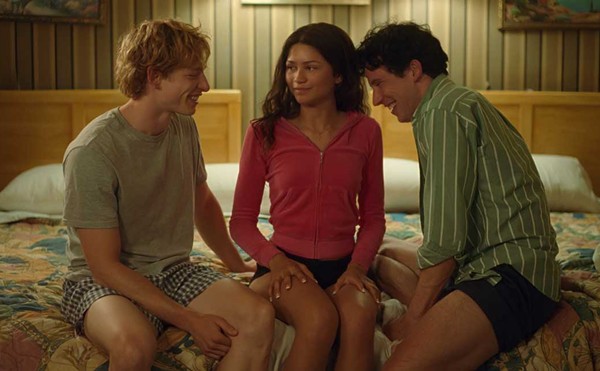In a year that saw the birth of three innovative downtown spaces — detroit contemporary, foundation and JRainey Gallery — as well as the arrival of administrative “good guys” Michele Spivak at the Center Galleries and James Steward at the University of Michigan Museum of Art, the top story has still got to be the reinstallation of the 20th century collection at the Detroit Institute of Arts.
With the departure of key arrière-garde administrators, a musty aura finally begins to ventilate from Detroit’s venerable house of art. And 20th century curator MaryAnn Wilkinson at last gets to put her imprint on one of the institute’s stronger suits. The team headed by Wilkinson, designer-exhibition coordinator Lou Gauci and education curator Nancy Jones has succeeded, for the most part, in giving life to the modern wing, making a precious trust accessible to the people of metro Detroit.
The reinstallation’s successes are immediate, vivid and user-friendly. Unorthodox tinting of many walls — white has been the preferred modernist background — has created an atmosphere of concentrated poetry. Where there were ho-hum groupings, now individual works stand out — even when hung in clusters, as in the Matisse alcove or the Picasso room.
It’s gratifying to see at least one gallery devoted to Detroit and Michigan artists — how about another? — underscoring affinities between such seminal figures as Cay Bahnmiller, Tyree Guyton, Gordon Newton, Ellen Phelan, Paul Schwarz and Gilda Snowden et al. In fact, the more contemporary rooms have a handsome gravity, an almost tragic air, as if commenting on the end-of-the-party times that spawned them.
The new 20th century installation is also spiced with educational benefits — such as a hand-held audio tourguide, and video-computer monitors which offer a mini-retrospective of surrealist cinema or a class on color with Josef Albers. Plus a new resource room, with shelves of beckoning monographs, tables and chairs for quiet study, seeks to soften modern art’s elitist reputation.
What’s not to like? For starters, there’s the mostly hysterical exhibit of studio glass, “A Passion for Glass: The Aviva and Jack A. Robinson Collection,” showcasing piece after piece of dazzlingly loud craftsmanship. Excepting meditative works by Damian Priour, Howard Ben Tré and Tom Scoon, this should be retitled “The Shining.”
Most problematic are the “Pop Art” and “Abstraction after 1950” rooms. There’s nothing intrinsically wrong with terrific Andy Warhol portraits of Mao Tse-Tung, masterworks by Robert Rauschenberg, Claes Oldenburg and Willem de Kooning, a stunning Edward Clark painting, etc. But the Pop room looks more like a storeroom where works get in each other’s visual way.
And the Abstract Expressionist spaces center on Mark di Suvero’s brilliant, daring but here intrusive sculpture “Tom.” There’s no place from which to see “Tom” without a painting or a doorway in the background;, there’s hardly enough space for a visitor to really appreciate the work’s rhythms and scope. “Tom” needs a new home, one befitting di Suvero’s grand gesture.
Only a few feet away is, ironically, a model of sensitive installation — the temple-like quarters of Robert Irwin’s untitled sphere of light and wisdom. But whoever said the exhibition drawing board was cast in stone? And, in the meantime, the DIA’s wondrous 20th Century Galleries are back in business.
George Tysh is Metro Times' arts editor. E-mail him at [email protected]




